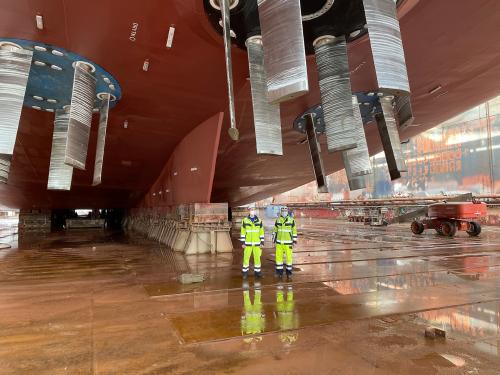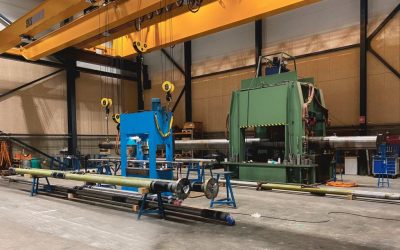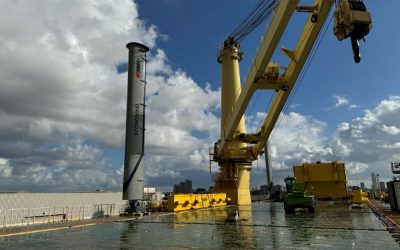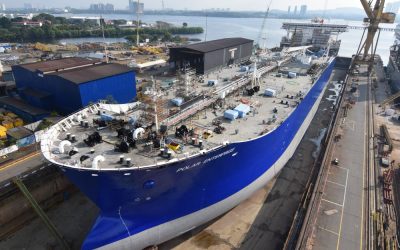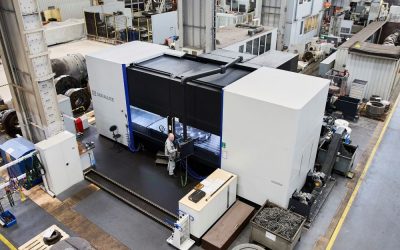One of the biggest projects carried out by the German propulsion system supplier Voith over the course of 2021 involved the 161m offshore construction vessel North Sea Giant which is equipped with five Voith Schneider Propellers (VSPs), each with a diameter of around 4.5m, two located in the bow and three in the stern.
The North Sea Giant spent seven weeks in the floating dock at Blohm + Voss in Hamburg for the overhaul of its VSPs after 10 years of service in the North Sea, Baltic Sea and the Atlantic, accumulating a total of 50,000 hours in operation. At the time this was Voith’s largest-ever servicing contract for the maintenance and overhaul of VSPs.
Over the seven-week period in dock, the Voith team painstakingly worked through a total of 1,705 work steps from a pre-determined project schedule. Every project stage had a time window that had to be met.
To begin with, an opening had to be cut out of the ship’s hull to be able to remove one of the five VSPs and its 45tonne wheel body within the eight hours provided for in the project schedule. This required guide rails to be installed and slinging points for the chain hoists welded on.
Once this stage was completed the core maintenance and overhaul work could then begin. The VSP was dismantled into its individual components; the gearbox was checked for hairline cracks using ultrasound; and the Voith service team subjected all parts that might experience wear to a special check. Subsequently, despite the good condition of the components, gaskets were replaced, all hydraulic cylinders overhauled and the control system recalibrated.
According to Voith, the service work in the floating dry dock went according to plan. All five propellers were sequentially removed from the hull, overhauled, reassembled and reinstalled, with welding and painting work on the vessel taking place concurrently.
Once the work to the VSPs was completed, the undocking of North Sea Giant, took place and was very time-consuming and needed detailed preparation. The inspection and acceptance process involved not only the entire maintenance crew onboard but also representatives of the various bodies that certify the acceptance and seaworthiness of the vessel. Once the VSPs had passed the tightness test, the crew powered up all systems, to check among other things that the cooling of the drive units was working properly. The overall contract is considered by Voith to have been an “absolute success” and was completed within the pre-arranged schedule.
Looking at the maintenance side of its operations generally, Voith points out that digitalisation is playing an increasingly important role in its service-related activities. As a result, Voith is continuing to expand offerings in this area particularly through OnCare.Health Marine, a cloud-based solution for vessels with a VSP. The system monitors all relevant processes in real time and raises the alarm as soon as critical values are reached. This prevents unforeseen vessel downtime and allows, through predictive maintenance, for spare parts to be procured in a timely manner to shorten the time spent in drydock.
Early warning signs of machine damage can be identified and correctly interpreted by OnCare.Health Marine, which continuously evaluates data from various sensors onboard. The system produces customised reports and optimisation proposals for the operator who can define the alarm settings according to their particular needs via an intuitive user interface onboard the vessel.
